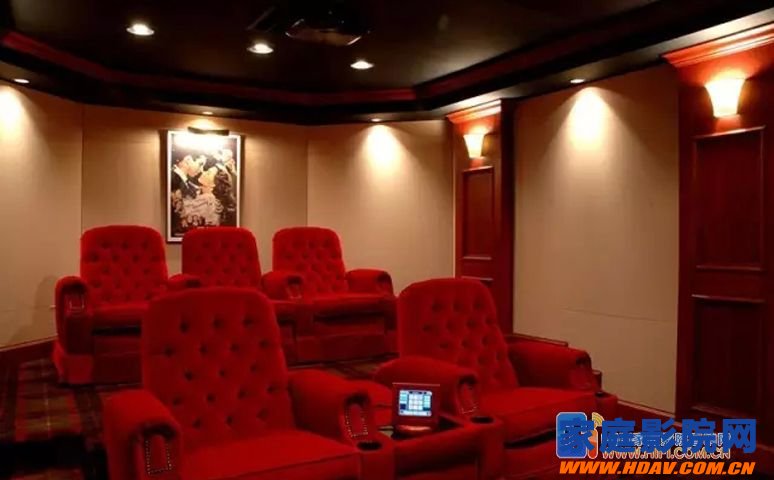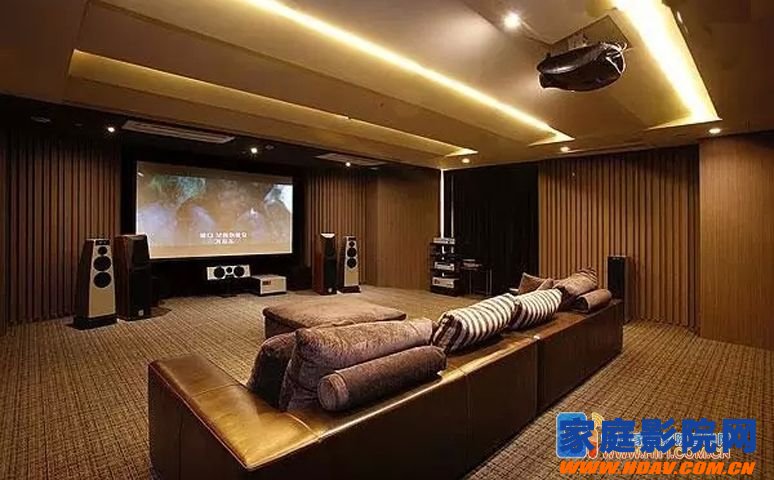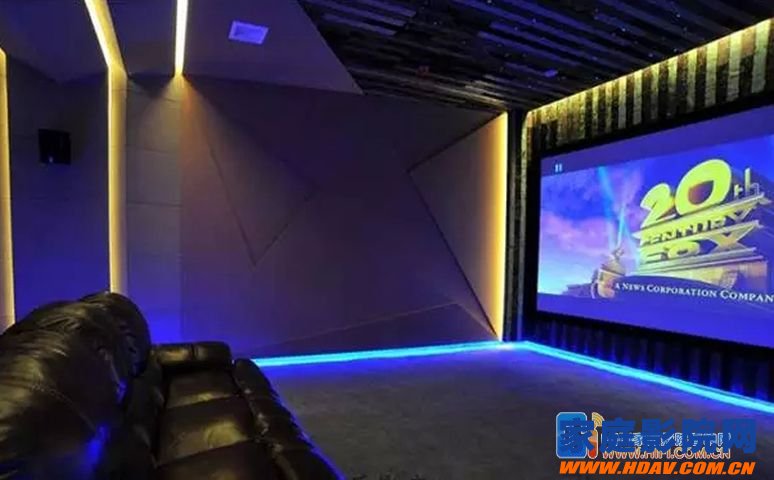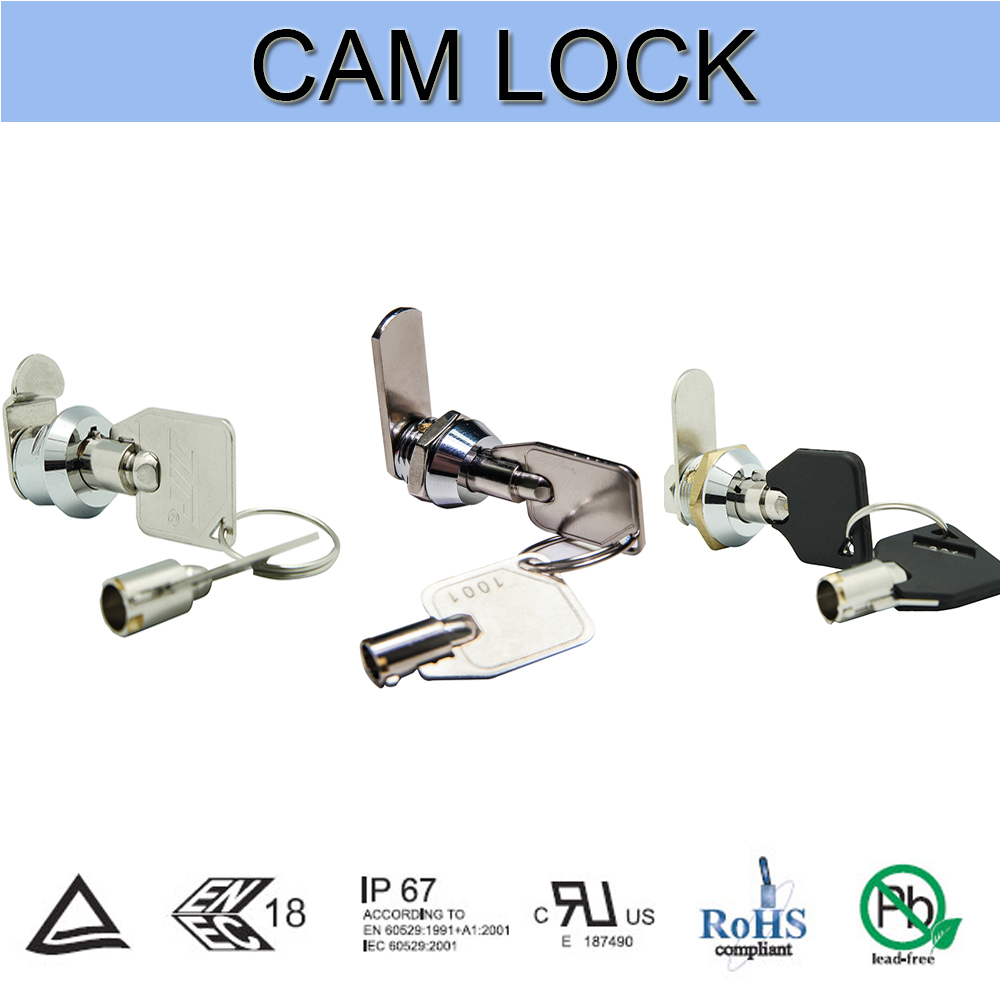Optical design points of audio-visual space in private home theater

[Home Theater Network HDAV.com.cn] The reason why commercial cinemas can attract so many viewers to watch, not only because they can see the wonderful movie blockbusters in the first time, but also because of the wonderful audio and video effects. The kind of immersive feelings of people. Therefore, in the design of the audio-visual room space of private home theaters, the optical design part is also quite important. The optical design of the so-called audio-visual room is mainly reflected in how to reduce the interference caused by ambient light on the large screen. Among the large commercial cinemas, we can easily find that almost all the auditoriums are in place for the processing of the optical parts, close to the dark black interior decoration, especially the large black area around the screen is not reflective. Covering the fabric basically ensures that the picture is not easily disturbed by the light from the interior of the auditorium, ensuring accurate reproduction of color and detail. However, since private home theaters often reflect the warmth of the home, optical design considerations can be said to be more difficult than cinema screenings.

The part that must be considered for optical processing
1. When watching a movie, the light outside the room cannot be directly projected into the picture. In fact, this is not difficult to do, mainly to prevent external light from entering the audio-visual room through windows and door seams. Regarding the need to keep windows in the audio-visual room, we recommend that depending on the actual situation, although strictly in accordance with the requirements of the audio-visual room, closed windows will make it easier to get the desired picture and sound performance. However, if the scenery outside the window is picturesque, you can consider keeping the window. Of course, it is recommended to close it when watching the movie. The optical treatment of the window should be carried out in the form of light absorption by means of a multi-layered curtain.
2. Try to avoid the reflection of light caused by ceiling, floor and surrounding walls. We recommend that the floor be covered with a carpet with a certain light absorption function. The ceiling is better for dark treatment or absorb light in the area near the screen. . After all, the projection system has a large picture, and the light in the picture can be easily projected on the surrounding walls, ceilings and floors. If these positions are not absorbed, it is easy to project the ambient light onto the screen, causing the details to be lost. There is even a color shift.

3. If a sound-transparent screen is used, special attention should be paid to the interference caused by the reflected light from the speaker behind the curtain. Since the sound-transmitting screen surface has many sound-transparent holes, in addition to the sound passing through these small holes, the projector's light will also be projected on the front speakers through these small holes, if the speaker surface is not non-reflective material. Some light absorption treatments need to be considered, but some mid-to-high-end translucent screens will consider adding a black light-absorbing curtain to the back of the sound-permeable curtain to avoid this problem.
4. Under normal circumstances, we do not recommend placing the sofa too close to the screen. The sofas used in many private home theater audio-visual rooms are made of leather or leather texture. The surface is shiny and especially easy. Reflecting light. If the audio-visual room of a private home theater is small and the sofa is close to the screen, consider a fabric sofa. The surface of the sofa seat is not so light-reflecting.

5. It is recommended that the audio-visual equipment adopts a hidden installation method, and it should not be placed barely in the environment around the screen. In general, the appearance of AV equipment such as AV amplifiers may be gold and silver that are extremely susceptible to light reflection. If hidden installation is not possible, it is recommended that all equipment be placed in the cabinet in a structured manner. A well-designed cabinet not only does not interfere with the reflected light of the picture, but also can be effectively integrated into the audio-visual room, and can also play a certain sound reflection and diffusion effect.

Where lighting needs attention
Any audio-visual room or screening room can't lack the lighting system, and the private home theater's audio-visual room is a relatively special place. Sometimes the audience may want to watch the movie under the faint light, so the reasonable lighting system is private. It is very important for home theater.
1. Any lighting equipment in the audio-visual room cannot directly illuminate the screen. Otherwise, it will seriously affect the reproduction of the color and detail of the picture, especially the video system based on the front projection system, and its own anti-interference ability to light. Weak.

2, ultra short throw projection system is a very good large screen solution in a small space private home theater, through the shortening of the projection optical path and higher output brightness effectively enhance the anti-light interference capability of the entire projection system. Of course, ultra-short-throw projection can easily cause distortion around the screen.
3, lighting system should use warm colors as much as possible, while using a light source system with dimming function, can not only save power, but also change the lighting atmosphere of the room through the change of light brightness.
4. If you really can't control the reflection of light around you, you need to make the reflected light more uniform to reduce the influence on the brightness and color uniformity of the projection screen. Therefore, when installing the lighting equipment, try to make the light pass through more reflective surfaces to reduce the intensity of the light.
More fresh and fun home theater information, please pay attention to home theater network http:// (WeChat: cnhifi), the country's most influential home theater audio player interactive media website.
Note: This article is transferred from Solan. The article is an independent view of the author and does not represent the position of the home theater network.
CAM Lock
Cam lock, as the name implies, is Mechanical key lock. Our mechanical lock series products are divided into 12mm, 16mm and 19mm according to size also could be divided into Cabinet CAM Lock with keys and Drawer CAM Locks without keys.The Key Switch has 2 positions and 1 keypull or 2 keypulls.All key alike or combination available.Hex nut mounted.
This cam lock cover a wide range of applications and can be used in large entertainment equipment, like ,vending machines, mechanical equipment, lockers, ATMS etc.

We have introduces high-precision CNC numerical control milling machine and multiple automatic processing equipment at home and abroad to improve cam lock` s precision,insuring all the cam lock cant be replaceable or copy. The specification is as follows:
Zinc alloy die cast housing and cylinder
Barrel chrome plated standard
Tumbler mechanism is pin or disc
It could be zinc alloy tubular Key Switches or flat key switch or without keys enter
Key may be withdraws in one or both positions
Hex nut or speed clip mounted
Have Multiple combination function.
CAM Lock,Cabinet CAM Lock,Safe CAM Lock,Drawer CAM Locks
YESWITCH ELECTRONICS CO., LTD. , https://www.yeswitches.com
